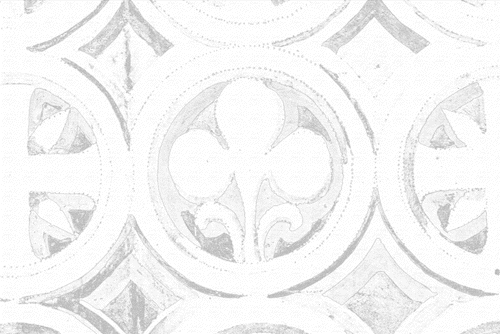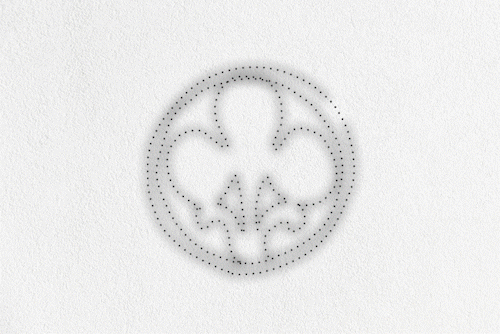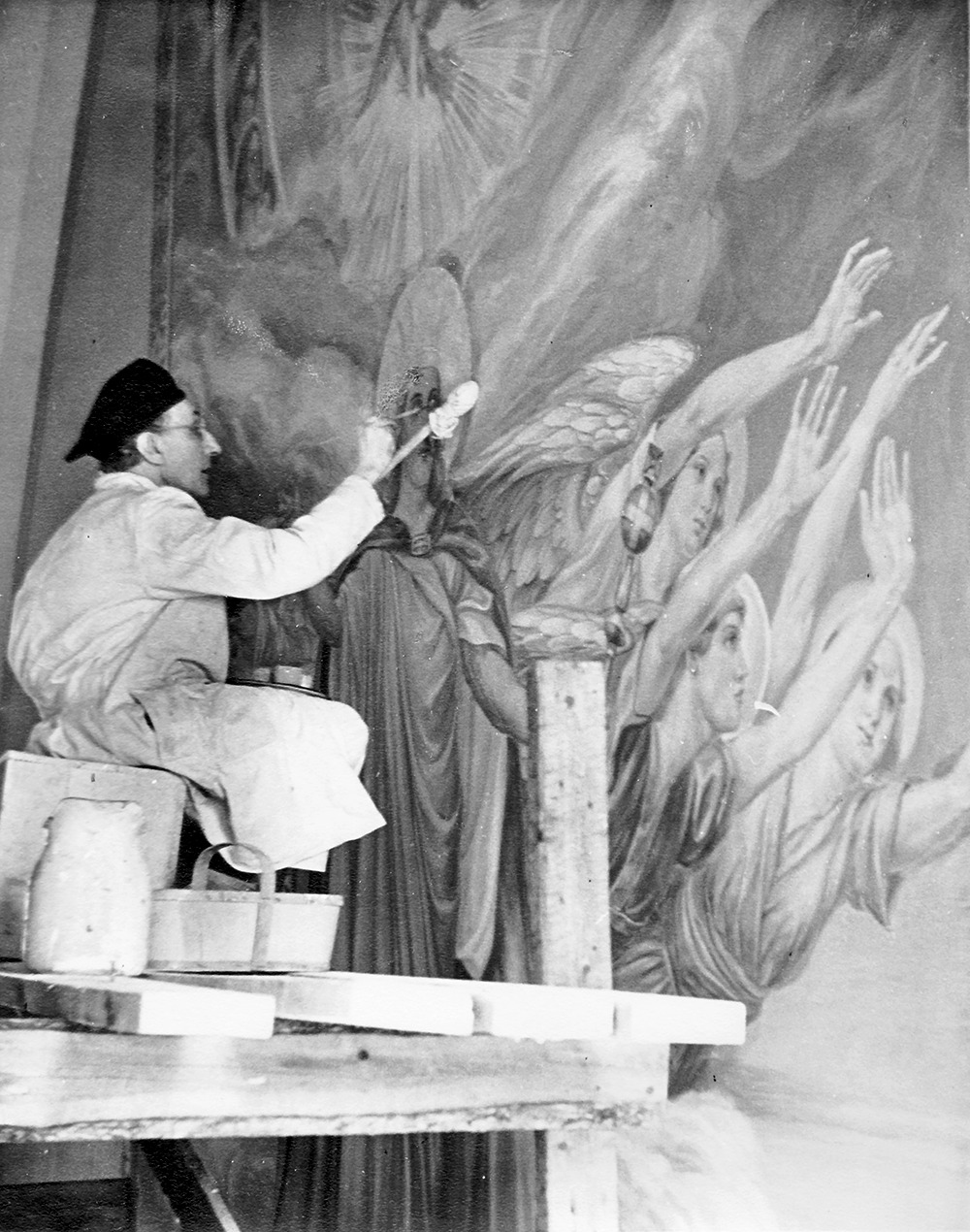
Frescoes, a painstaking art
Head for the ambulatory behind the altar.
Baie-Comeau, 1940 — Nincheri’s assistant has just finished applying the intonaco, a very thin layer of fresh plaster on which the artist will then be able to work. An area of approximately 3 metres by 3 metres was prepared at the beginning of the day. As the plaster takes only twelve hours to dry, Nincheri has to quickly get down to work: he starts one hour after the plaster has been applied and continues to paint until two hours before it is fully dry. He therefore has only seven to nine hours to paint.
Fortunately, everything is ready in advance. During the colder months, when the temperature dropped too low to be able to work in an unheated church, the artist planned the decorative scheme and sketched the main motifs ahead of time. Once he’d arrived in Baie-Comeau, he prepared the cartoons as he went along. The outlines of these full-scale preparatory drawings were pierced using a sharp steel pin.

When Nincheri was ready to paint, his assistant held the cartoons against the wall while he gently tapped them with a pounce bag, a small burlap bag filled with charcoal powder. As he did this, the black charcoal passed through the burlap mesh and then through the tiny holes in the contours of the drawings, leaving an imprint of small black dots on the intonaco which served as guidelines when he painted the fresco.

The pigments were also ready in advance. Nincheri would mix them with a binder and water to make a paste that could then be applied to the wall with a brush. As he was working on fresh plaster, the support immediately and permanently absorbed the colour.

Painting a fresco in Baie-Comeau was challenging. The mixture of plaster and local sand used as the painting surface caused unpredictable chemical reactions that dulled the pigments. Nincheri had to constantly adapt: there was no way of retouching a fresco.
At the end of each working day, the unpainted intonaco was removed and the next day, a fresh layer of plaster was applied next to it. Careful attention was paid to the joints to give the impression that Nincheri was painting a single large section at a time.
For five (5) years, Nincheri repeated these steps until he had completed the one thousand five hundred square metres (1,500 m2) of frescoes that now adorn the Sainte-Amélie Church.